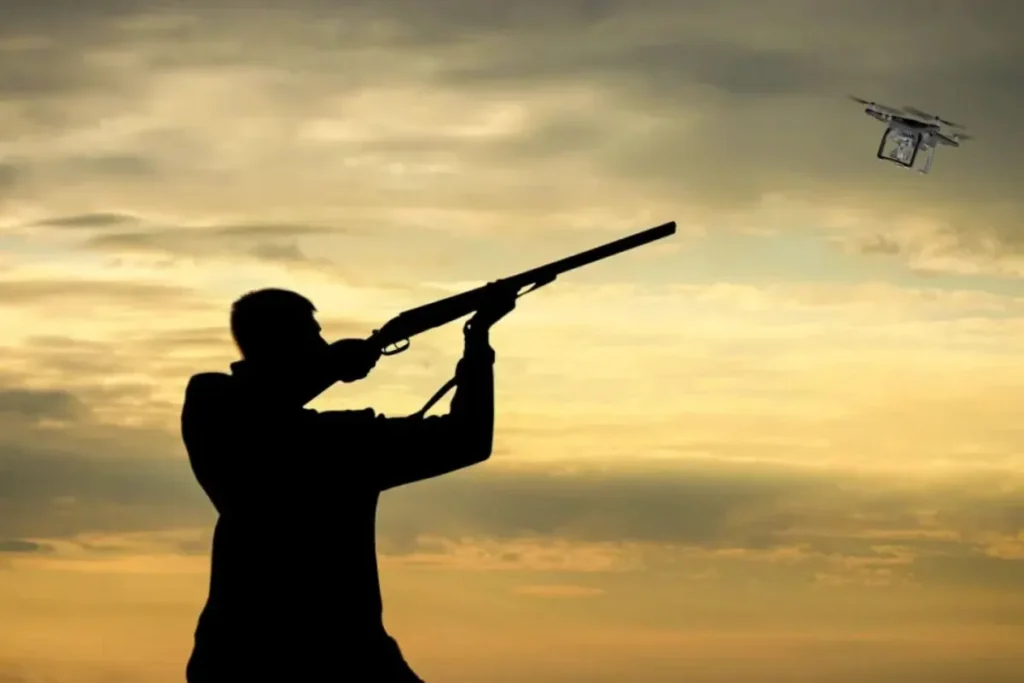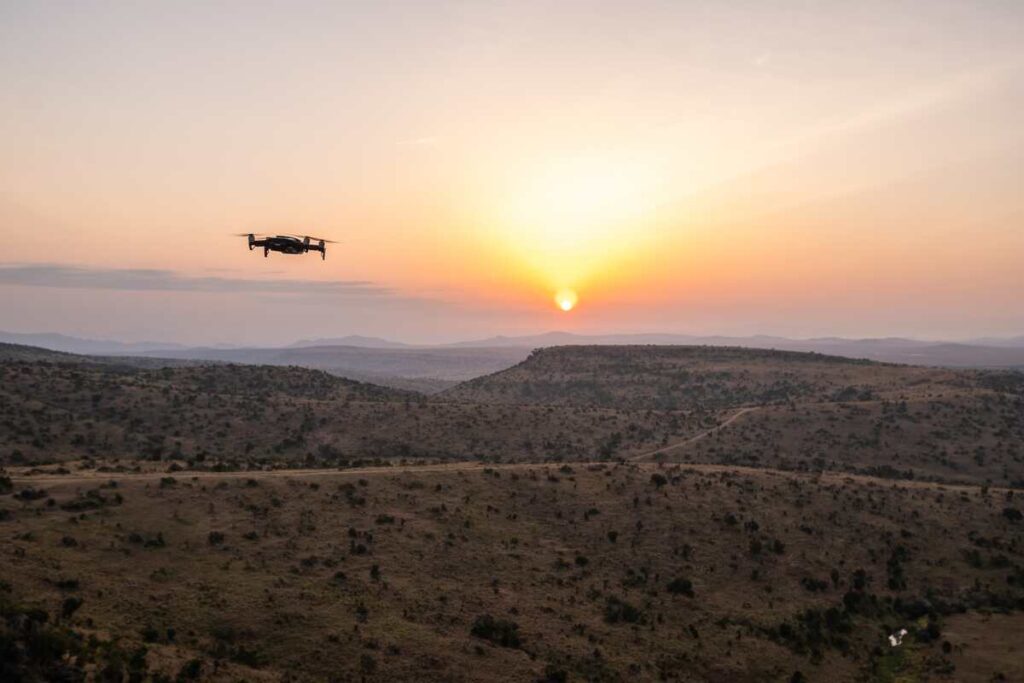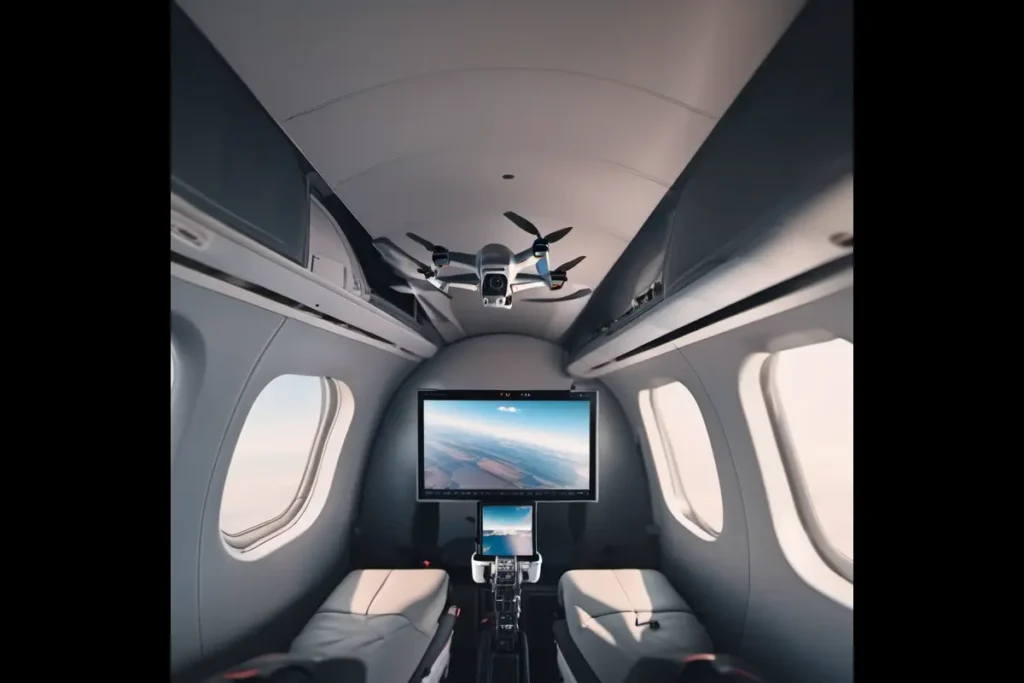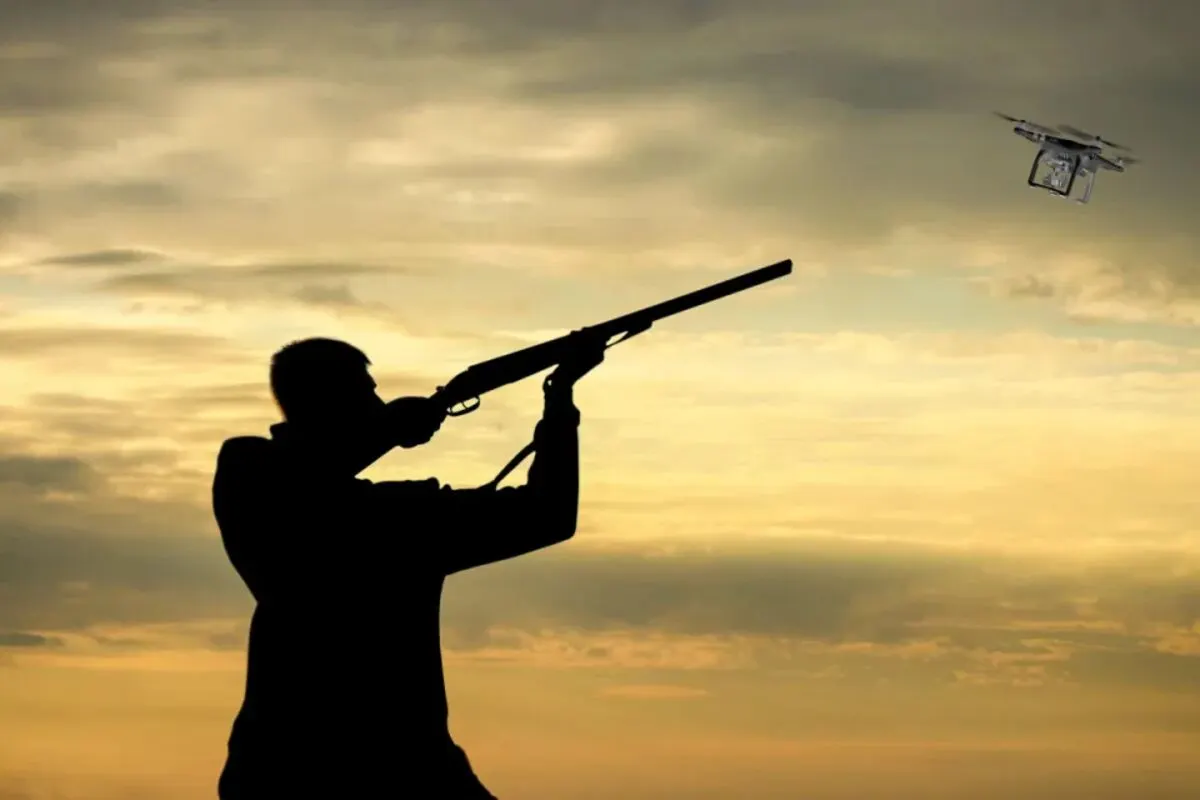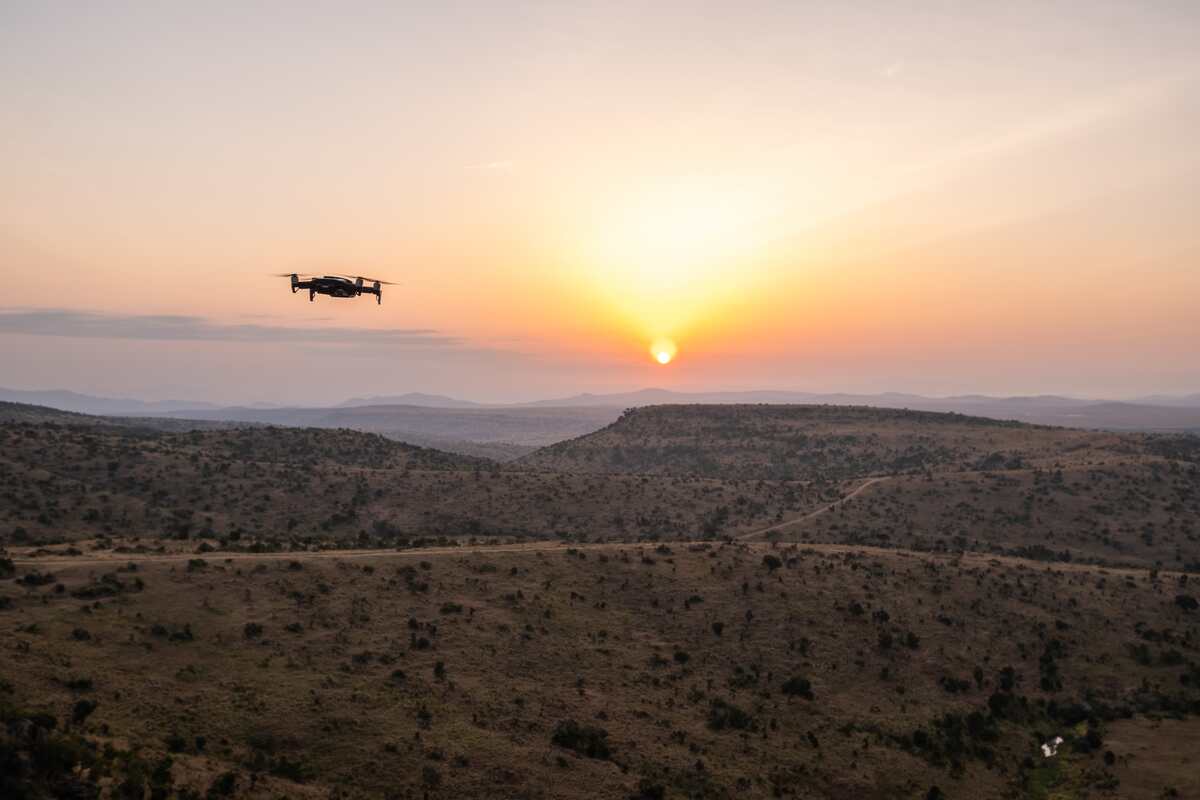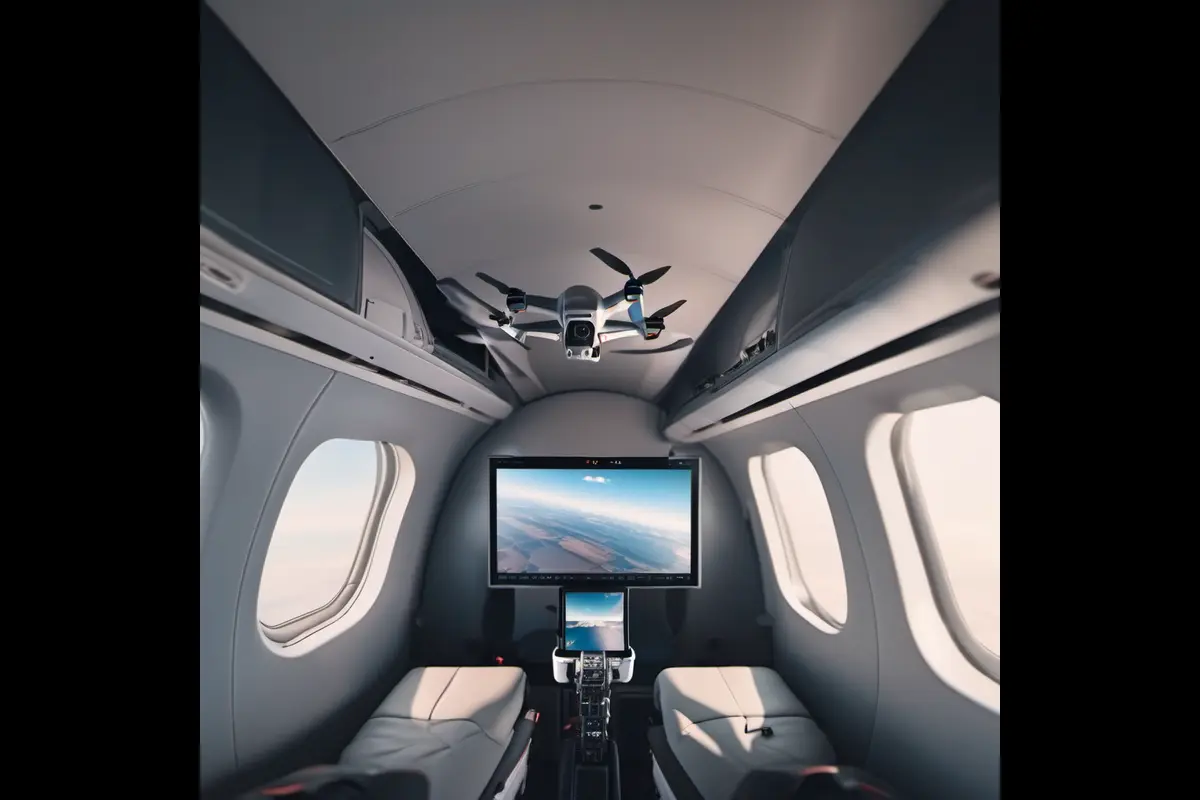How Far Can a Military Drone Fly? Find Out!
Unlocking the Secrets of Military Drones
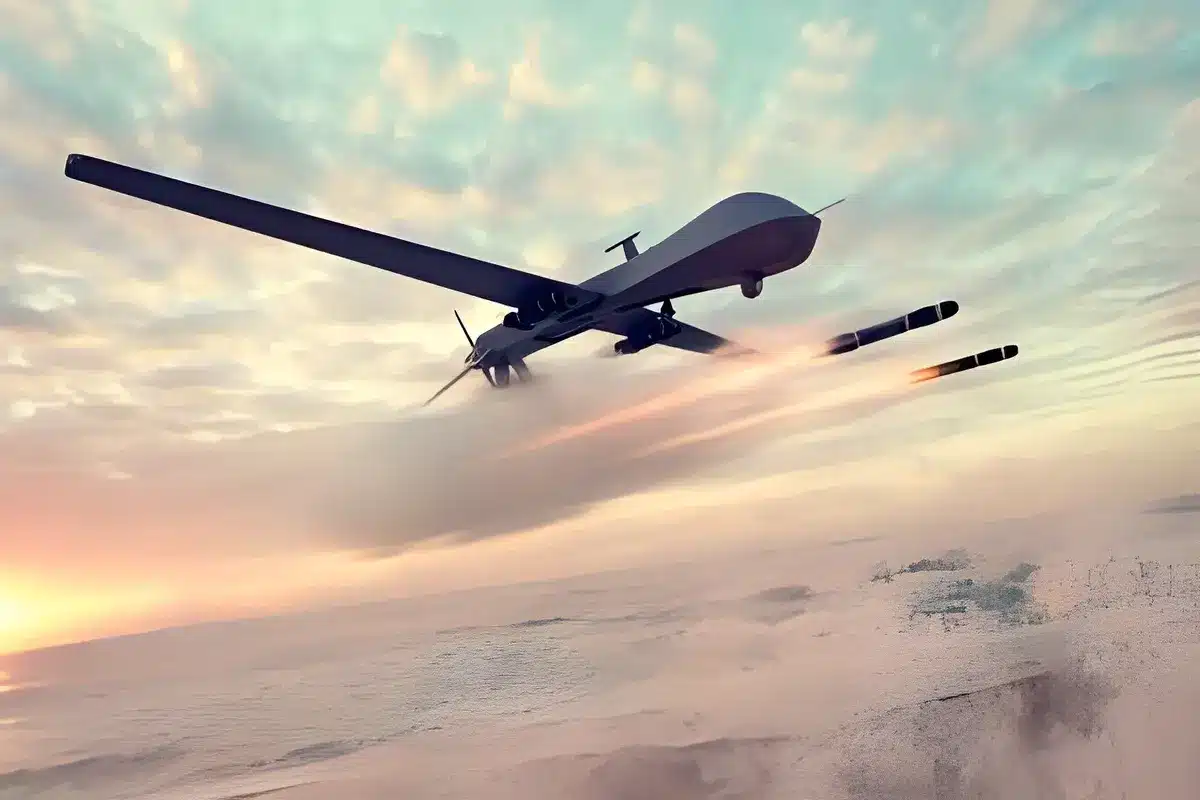
Image Source: Shutterstock
Technological advancements not only make ordinary people’s lives easier, but they also assist militaries in detecting threats and taking precautionary measures. Military drones are one of many threat detection tools that can be guided either autonomously or through remote control. The military uses these unmanned aerial vehicles (UAVs) for reconnaissance, target acquisition, intelligence gathering, and surveillance. You are probably wondering how far a military drone can fly. Let’s find out in this article.
Types of Military Drones
The military uses different types of drones to ensure the safety of people. Each drone has its own unique features and limitations. Here are the pros and cons of the four most used ones:
Type of Drone | Purpose | Pros | Cons |
| Fixed-wing drones | Surveillance aerial mapping | – Excellent for high payload- Great flight speed and flying time- Stability during winds | – Pilots must be professional- Large landing space is required- Overpriced- Hover/VTOL feature not available |
| Single-rotor drones | LiDAR laser scanning | – High endurance- Heavy payloads- VTOL/Hover feature- Flight mode option | – Professionals pilots required- Dangerous to drive- Costly than others |
| Multi-rotor drones | Aerial photography and inspection | – Pilots can control easily- Affordable and portable- Have VTOL/Hover feature | – Less stability during windy days- Less flying time- Low flight speed- Minimal payload capabilities |
| Fixed-wing hybrid VTOL | Used for rescue mission inspections and utility search inspections | – High flying time- Larger payload capability- Hover/VTOL capabilities available | – Skilled pilots are required to control- Expensive |
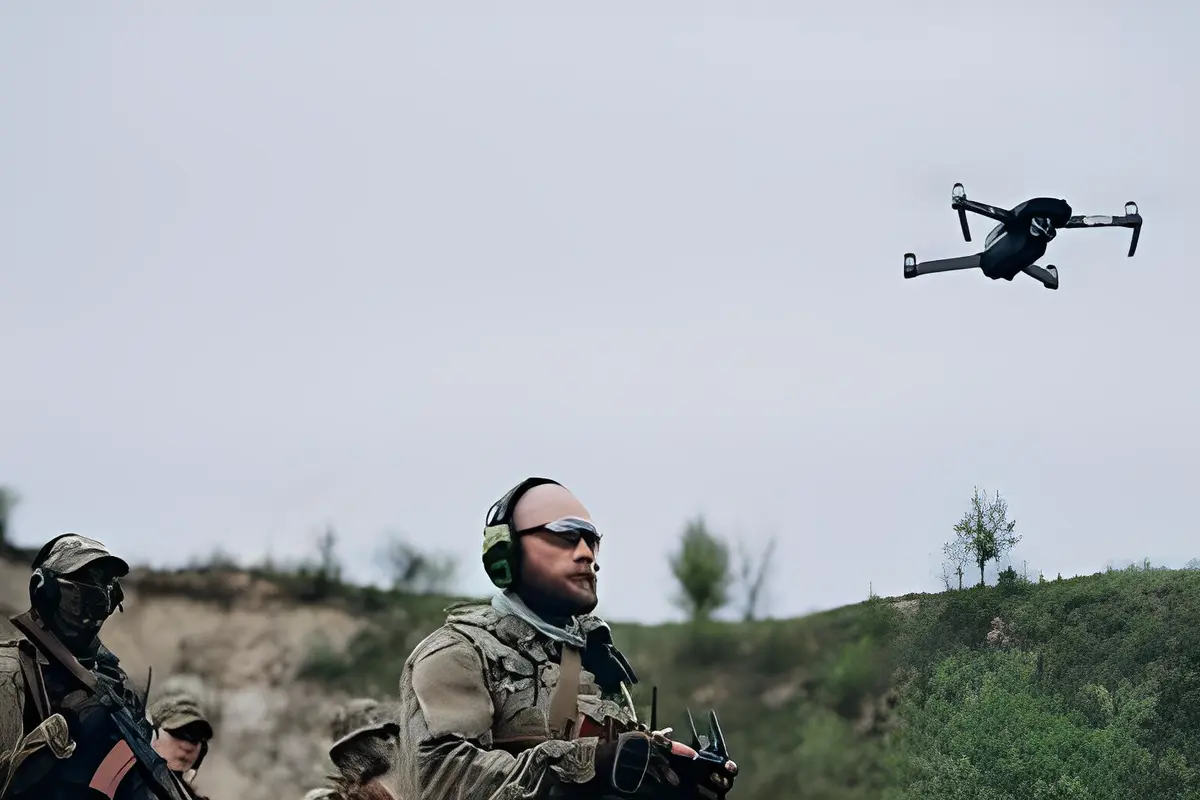
Image Source: Shutterstock
Factors Affecting the Flight Range of Military Drones
Given below are the factors that impact how far a military drone can fly:
- Battery Capacity:
One of the critical factors that impacts the flying range of a drone is battery capacity. The battery provides electrical energy to the drone, which is essential to operating its motors, propellers, and other crucial components. Therefore, the flying time and distance for large battery-capacity drones are longer. This is beneficial in certain cases where the military has to perform long-range surveillance, cover larger areas, or carry out missions that may require longer flight times. It is crucial to understand that larger battery capacities might offer extended flight duration and range, but they also increase the weight of the drone.
- Drone Size and Weight:
The weight of the drone impacts its power consumption and flying efficiency. Usually, light-weight drones with similar battery capacity can fly far in comparison to heavier drones. This is because heavy drones require more energy to stay airborne. Furthermore, range can be improved by aerodynamic drones with a stemalined design, which includes the drone’s body, wings, propellers, and low drag.
- Environment and Climate Conditions:
Environmental and climate conditions directly impact the range and performance of the drone. Flying a drone against strong headwinds can increase power consumption and reduce the drone’s flying time. This is because extreme temperatures and humidity can affect battery performance, obstructing the overall distance of the flight. Driving a drone in high temperatures can lead to overheating and also impact battery performance. Furthermore, low temperatures can reduce the efficiency of the battery, resulting in less power and a decrease in flying time.
- Controller, Propeller, and Motor:
Firstly, the signal transmission from a controller has an impact on a drone’s performance as well. The operator has to maintain a specific distance from the drone if the controller has a limited range. This usually indicates a shorter operating range for the drone than it would have with a stronger controller signal.
Secondly, drone propellers with efficient designs produce more lift with less power consumption. However, a drone’s range can be reduced if the propeller is damaged or improperly balanced. And lastly, the motors also play a crucial role in the flying time of military drones. A motor that has more thrust capacity can carry a larger payload, travel faster, and be more resilient to environmental disturbances like strong winds. However, this comes at the expense of a shorter range because these strong motors usually use more energy.
Frequently Asked Questions(FAQs)
The Army and Air Force both employ military drones. However, trained military personnel, such as pilots and ground control teams, typically operate them.
Drones are controlled from long distances with the help of a GPS tracker. It provides accurate flight paths along with comprehensive location, velocity, and altitude data. GPS trackers contribute to increased range and mission effectiveness by ensuring autonomous and dependable operation over extended distances.
Conclusion
In conclusion, technological advancements such as military drones have revolutionised the efficiency of the military. They provide invaluable support for threat detection and precautionary measures. The flight range of a drone is affected by numerous factors, such as battery capacity, size, environmental conditions, and the quality of its components.
Why trust Brownspace?
At Brownspace, we write about what matters most to the audience. We do well-researched work to provide in-depth knowledge of drones. Additionally, we interview people using drones to ensure the credibility of the drones used and offer real-life user experience to our readers.

Hi, drone enthusiasts! Born with a natural curiosity for the skies, I developed a love for drones early in life. I began flying drones in 2017 and have since piloted some of the best drones available, such as the Yuneec Typhoon, DJI Mini, Mavic Pro, Hover Camera, and Phantom 3. With passion for drones and expertise gained over the years, I would love to share my knowledge of drones at Brownspace. Stay tuned for an insider’s perspective about drones.


